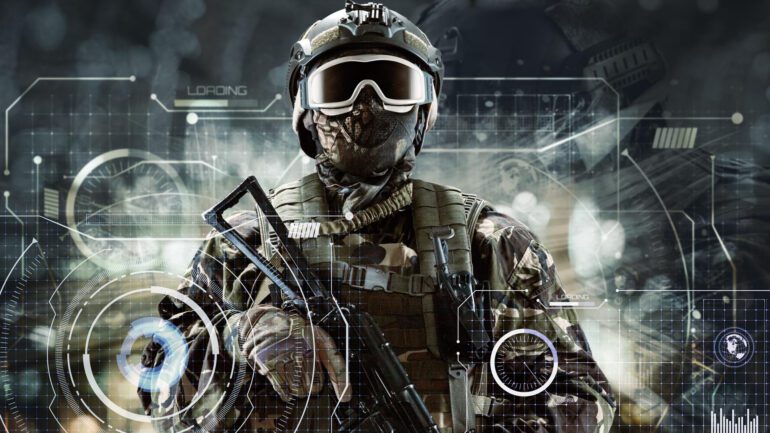TL;DR:
- Josh Lospinoso, a cybersecurity entrepreneur, discusses the importance of AI in protecting military operations.
- Data poisoning, the manipulation of data seen by AI systems, poses a significant threat.
- Instances of data poisoning have occurred, highlighting the need for vigilance.
- AI plays a crucial role in cybersecurity, but adversarial AI is used by hackers to undermine defense systems.
- Mission-critical vulnerabilities in newly developed weapons systems highlight the urgency of securing existing systems.
- Incorporating AI into military software systems presents both opportunities and challenges.
- The rush to deploy AI products without sufficient security measures is a concern.
- Companies, including those in the defense sector, are pivoting toward AI, causing economic dislocations.
- The use of AI in military decision-making, such as targeting, is still far from being ready.
Main AI News:
The intersection of artificial intelligence (AI) and cybersecurity has become a paramount concern in the realm of military technology. Entrepreneurs like Josh Lospinoso, a former Army captain and cybersecurity expert, are at the forefront of developing innovative solutions to address these challenges.
Lospinoso’s first foray into the cybersecurity industry resulted in the successful acquisition of his startup by Raytheon/Forcepoint in 2017. His second venture, Shift5, collaborates with the U.S. military, rail operators, and airlines, including industry giants like JetBlue. Drawing from his extensive experience as an author of hacking tools for the National Security Agency and U.S. Cyber Command, Lospinoso recently shared his insights with a Senate Armed Services subcommittee, shedding light on the vital role of AI in protecting military operations.
During his testimony, Lospinoso highlighted two primary threats associated with AI-enabled technologies: theft and data poisoning. While theft is a concept that requires little explanation, data poisoning, as he described it, is akin to digital disinformation. Adversaries who possess the ability to manipulate the data seen by AI-enabled systems can profoundly impact their operational behavior.
When queried about the prevalence of data poisoning, Lospinoso acknowledged that while it hasn’t become widespread, isolated incidents have occurred. He cited the case of Microsoft’s Twitter chatbot, Tay, in 2016, which was subjected to abusive and offensive language by malicious users. As a result, Tay started generating inflammatory content, leading Microsoft to swiftly take it offline. This incident underscores the significance of data poisoning and its potential ramifications.
While AI has long played a vital role in cybersecurity, particularly in areas such as email filters and malware detection software, Lospinoso emphasized the existence of adversarial AI. Offensive hackers also utilize AI to undermine classification systems, presenting a perpetual challenge in the ongoing arms race between cybersecurity experts and malicious actors.
Shifting the focus to military software systems, Lospinoso raised concerns stemming from a 2018 Government Accountability Office report that revealed mission-critical vulnerabilities in nearly all newly developed weapons systems. Additionally, there is ongoing consideration within the Pentagon to incorporate AI into these systems. Addressing these issues, Lospinoso emphasized the need to secure existing weapons systems adequately.
With numerous legacy systems retrofitted with digital technologies, vulnerabilities persist, rendering them prone to attack. The interconnected nature of various military assets, including aircraft, ground vehicles, space assets, and submarines, further compounds the challenge. As data flows in and out of these systems, they become porous and challenging to upgrade, ultimately making them attractive targets for attackers. While building new platforms might seem like an easier alternative, AI can play a pivotal role in defending these interconnected systems against compromise.
Responding to concerns about pausing AI research, Lospinoso cautioned against such a course of action, as it could inadvertently favor competitors like China. However, he also expressed apprehension about the rush to deploy AI products without sufficient consideration for security measures. Lospinoso drew attention to the so-called “burning-use” case, where hastily developed products often succumb to vulnerabilities, hacking attempts, or unintended consequences. He stressed the need to strike a balance between the rapid pace of AI development and ensuring security and responsibility. Encouragingly, both the White House and Congress have initiated discussions on these critical matters.
Lospinoso further commented on the growing trend of companies, including those in the defense sector, hastily announcing AI products that may not be fully matured. The fervor surrounding AI has resulted in significant disruptions, fundamentally altering business models and necessitating adaptation to avoid being caught unprepared.
Regarding the use of AI in military decision-making, particularly in targeting, Lospinoso expressed unequivocal skepticism. He firmly asserted that the current state of AI algorithms and data collection is far from being ready for deploying lethal weapon systems. While AI shows promise in certain areas, there remains a significant gap to bridge before entrusting autonomous decision-making to these technologies.
As the world continues to grapple with the intricate interplay between AI and cybersecurity, experts like Lospinoso serve as guiding voices, emphasizing the need for robust security measures, responsible development, and a vigilant approach to protecting military operations. The integration of AI into military tech holds great potential, but caution, foresight, and a comprehensive understanding of the risks must be paramount to ensure a safe and secure future.
Conclusion:
The intersection of AI and cybersecurity in military technology represents both opportunities and challenges for the market. While AI can enhance the protection of military operations, the risks associated with data poisoning and adversarial AI must be addressed. The urgency to secure existing systems and ensure responsible AI development is critical. The rush to deploy AI products without sufficient security measures raises concerns about vulnerabilities and unintended consequences. Businesses, including defense companies, are navigating the transformative impact of AI, leading to significant economic shifts. As the market progresses, a careful balance between innovation and security measures is essential for a successful and sustainable future.

